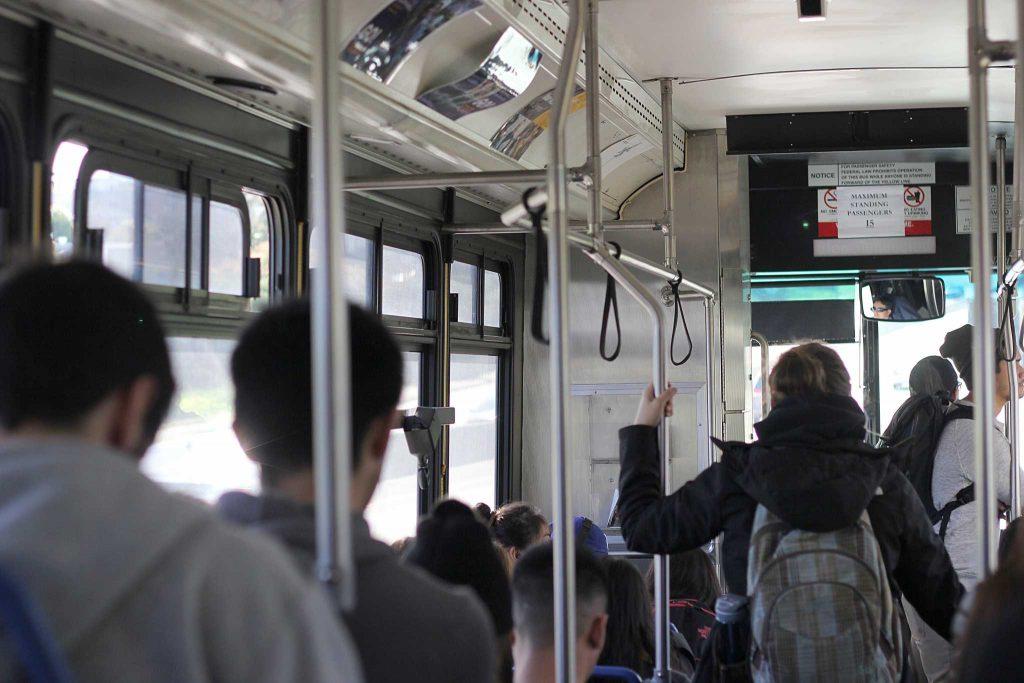The University Police Department and Parking and Transportation have created a new policy after the California Highway Patrol recently conducted routine inspections on several of the campus shuttle buses provided by Transmetro. This is one of the many safety concerns being worked on among several recent security flaws throughout San Francisco.
The CHP discovered that several shuttles had broken axles as a result of overcrowding. The new policy requires the shuttle drivers to follow a much stricter capacity limit.
According to Jonathan Morales, the director of news and new media for SF State, the two 40-foot buses have a total capacity of 60 passengers, with 15 standing and 45 seated, while the two 30-foot buses have a total capacity of 50 passengers, with 10 standing and 40 seated.
Overcrowding is a major issue faced by commuters, not only on the SF State shuttles, but by BART and Muni passengers around the entire city.
Overcrowding poses an inconvenience and discomfort to commuters, which Taylor Huckaby, BART’s district spokesperson recognizes, but says there is no way to regulate overcrowding, and that it does not pose a safety concern, especially in regards to the possibility of derailment.
“The train cars can handle however many people get on them,” said Huckaby. “A weight-related derailment would require passengers to be packed in from floor to ceiling like cargo.”
Overcrowding is only one of the many issues that public transportation in San Francisco is facing, another large issue is functioning surveillance cameras.
According to the SF State Transportation Survey conducted in 2014, 48.6 percent of campus affiliates use Muni for some portion of their trip to campus and 26.4 percent use BART.
The San Francisco Chronicle conducted a survey and found that only 23 percent of security cameras are actually functioning on BART’s fleet of 669 cars.
“I’ve commuted (from Fremont) for three of four years at SF State,” said fourth-year biology student Shivang Mehta. “One time, I was on BART on the 7 a.m. train because I had a 9 a.m. class. I fell asleep listening to my iPod, which I put in my hoodie pocket. When I got to Daly City, my iPod was gone.”
Similar to Mehta, another SF State student, Jordan Simpson, had her wallet stolen on BART recently, and asked the driver to check the security camera and see if they could identify who stole her wallet.
“(The BART driver) told me that the cameras are just for show and that they don’t work,” Simpson said. “He said they are there to give an illusion that people should feel responsible for their actions and to make people feel safer.”
Huckaby said the transit system is taking steps toward ensuring more surveillance is available once a new fleet of cars is introduced starting in 2017.
“I think getting on a Muni, where you can barely shift your weight and know that you have to be totally aware of your surroundings, has kind of just become something we accept,” said fourth year commuter student Jose Chavez as he stood in line waiting for the SF State shuttle. “I don’t enjoy commuting and I don’t feel totally safe either.”






